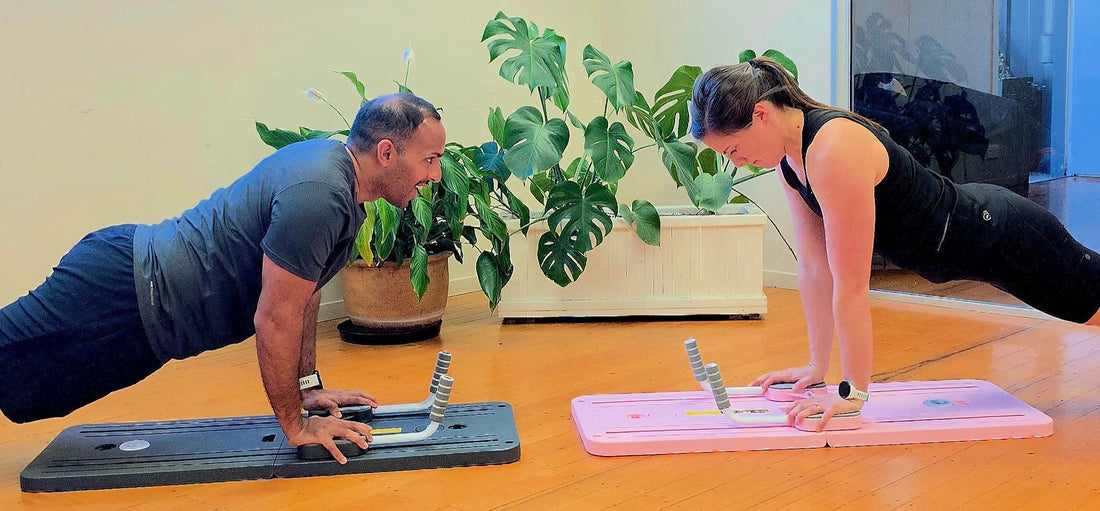
The Core of Wellbeing: Why Core Strength Matters for Your Health
5–7 min read • Evidence-informed fitness tips
Your core is more than “abs.” It’s a 360° system—deep abdominals, obliques, lower back, pelvic floor, glutes, and diaphragm - that stabilises your spine and transfers force through every movement you make. When your core is strong and well-coordinated, everything gets easier: posture, breathing, balance, and even how your joints feel at the end of a long day.
What a Strong Core Actually Does (Beyond a Six-Pack)
- Protects your back: A stable core reduces shear forces on the spine and helps prevent everyday aches and overuse injuries.
- Improves posture & reduces fatigue: Efficient alignment means less muscular “bracing,” so you tire less while sitting, standing, or training.
- Boosts balance & coordination: Core muscles act like your body’s “anti-wobble system,” improving agility in sport and stability on stairs.
- Supports better breathing & pelvic health: The diaphragm and pelvic floor are core players—literally. Coordinated core work can enhance breath quality and daily comfort.
- Makes everyday life easier: Lifting groceries, playing with kids, gardening—core strength turns these into safe, confident movements.
Signs Your Core Needs Attention
- Recurring tightness in the lower back or hips
- Slouching or discomfort when sitting >30–60 minutes
- Wobbly balance on one leg
- Struggling to brace when lifting, pushing, or pulling
Core Training Myths—Busted
- “More crunches = better core.” Crunches target a slice of the system. Real-world core strength requires anti-extension, anti-rotation, and hip-to-torso control.
- “Heavy lifts are enough.” They help—if technique is excellent. Dedicated core work fills the gaps and builds resilience for daily life.
- “Core training is only for athletes.” It’s foundational for everyone, from beginners to weekend warriors.
A Simple 10-Minute Core Routine (Beginner-Friendly)
Do 2–3 sets, moving with control. Rest 30–45s between exercises.
- Dead Bug (anti-extension) – 6–8 reps/side
- Side Plank (anti-lateral flexion) – 20–30s/side
- Glute Bridge (hip-spine coordination) – 10–12 reps
- Bird Dog (anti-rotation) – 6–8 reps/side
Using the FitMe Fitness Board? Try Sliding Plank (20–30s) and Core Tucks (8–10 reps) for smooth, joint-friendly progression.
Progression Tips (Safe & Effective)
- Quality > quantity: Keep ribs stacked over pelvis; breathe through reps.
- Progress one variable at a time: Time (20s → 40s), range (short → full), or resistance (light → moderate).
- Balance the system: Train anti-extension, anti-rotation, and hip control across the week.
- Consistency wins: 10 minutes, 3–4× weekly, beats an occasional long session.
Who Should Prioritise Core Strength?
- Desk workers with stiffness or “tech neck”
- Parents & caregivers lifting and carrying daily
- Runners & lifters seeking better form and fewer niggles
- Anyone returning to exercise who wants a safe, confidence-building start
Quick Starter Plan (2–3 Days/Week)
- Day A: Sliding Plank • Dead Bug • Glute Bridge
- Day B: Side Plank • Bird Dog • Core Tucks
- Day C (optional): Split Squats • Pallof Press • Hip Hinge Practice
Finish with 2–3 minutes of easy breathing (inhale through nose, exhale longer than inhale).
Ready to Feel the Difference?
Build a routine you’ll stick to with the FitMe Fitness Board - smooth sliding, joint-friendly movements, and quick guided sessions you can do anywhere.
→ Shop the FitMe Board (and try the 10-minute core routine today)
